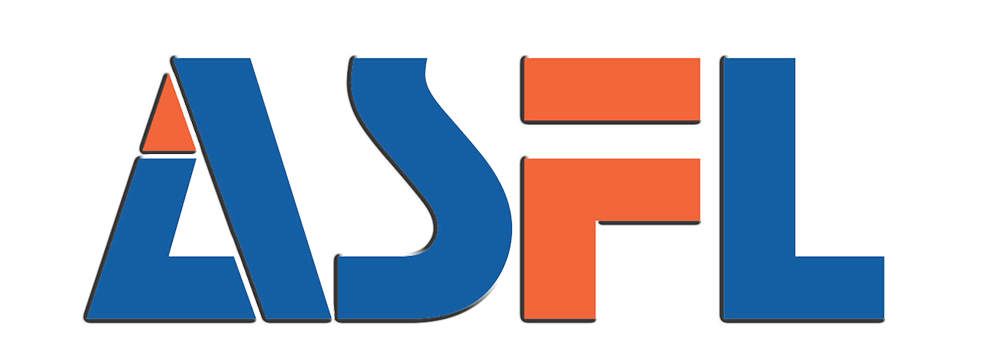Entendendo o ROI em investimentos em máquinas de enchimento automático
Definindo ROI para automação em processos de enchimento
O cálculo do ROI analisa basicamente quanto dinheiro é recuperado após o investimento em máquinas automáticas de enchimento, em comparação com o custo necessário para colocá-las em funcionamento. Ao compararmos esses sistemas automatizados com os métodos manuais tradicionais, há claramente economia ao longo do tempo. Os custos com mão de obra diminuem, já que são necessárias menos pessoas, os materiais são utilizados de forma mais eficiente e as máquinas simplesmente não ficam paradas esperando alguém para operá-las. Eliminar apenas uma posição de trabalhador manual em tempo integral geralmente permite que as empresas economizem cerca de 180 mil dólares por ano. E no que diz respeito ao desperdício de produto durante o processo de enchimento? A automação pode reduzi-lo drasticamente, diminuindo os níveis de perda às vezes para menos de 3% do que eram anteriormente. Esse tipo de melhoria faz uma grande diferença nos resultados finais das operações de fabricação.
Principais métricas para medir o ROI da adoção de máquinas de enchimento automático
Três indicadores de desempenho fundamentais garantem uma avaliação precisa do ROI:
- Índice de Custo com Mão de Obra : Acompanha reduções de pessoal devido ao manuseio automatizado de garrafas e tampas
- Relação de Eficiência de Materiais : Compara os níveis de desperdício antes e após a automação
- OEE (Overall Equipment Effectiveness) : Mede os ganhos na qualidade da produção (normalmente +15–25%) e no volume produzido (+30–50% na utilização da capacidade)
De acordo com pesquisas do setor, 83% dos fabricantes alcançam retorno do investimento em até 18 meses ao acompanhar consistentemente essas métricas.
Estudo de Caso: Análise de ROI de um Fabricante de Médio Porte Após Automação
Um produtor de bebidas substituiu cinco estações de enchimento manuais por máquinas rotativas de pistão, reduzindo custos anuais com mão de obra em US$ 620 mil. O desperdício por superenchimento caiu de 4,2% para 1,1%, gerando uma economia de US$ 278 mil por ano em matérias-primas. Uma análise independente confirmou um ROI de 214% ao longo de três anos, com benefícios adicionais provenientes da possibilidade de operações 24/7 anteriormente limitadas por turnos de trabalho.
Economia Direta com Sistemas Automatizados de Enchimento
Redução de Custos com Mão de Obra por Menor Intervenção Manual
Sistemas automatizados reduzem significativamente a necessidade de mão de obra — linhas tradicionais exigem de 3 a 5 operadores por turno para enchimento, monitoramento e verificações de qualidade, enquanto máquinas modernas de enchimento automático permitem supervisão por um único operador. Essa redução gera economias anuais de $58.000–$92.000 por linha (Food Manufacturing Journal, 2023), contribuindo para um ROI inferior a 18 meses para produtores de alto volume.
Redução de Perdas de Material com Precisão em Máquinas de Enchimento Automático
Quando as pessoas enchem recipientes manualmente, tendem a perder entre 2,7% e 4,1% dos seus materiais a cada mês por erros simples, como excesso de enchimento ou derramamentos acidentais. Os equipamentos automatizados contam uma história diferente. Esses sistemas mantêm as medições de volume dentro de mais ou menos meio por cento, graças aos sofisticados motores servo e sensores de câmera que monitoram o que está acontecendo. Para empresas de tamanho médio, esse nível de precisão economiza entre doze mil e quarenta mil dólares por ano apenas em materiais brutos. Já vimos isso acontecer repetidamente em fábricas reais também. Aquelas bocais especiais que se ajustam conforme a espessura da substância realmente reduzem a bagunça que assola as operações manuais, nas quais o material continua escorrendo muito tempo depois de alguém pensar que já terminou.
Reduza os Custos de Processamento de Faturas Minimizando Tarefas Manuais e Erros
O rastreamento digital integrado em sistemas automatizados reduz a carga administrativa: instalações economizam 6,8 horas semanais ao substituir registros em papel por registros digitais de lotes, e os relatórios automatizados de conformidade reduzem em 43% o tempo de resolução de disputas de faturas (Relatório de Referência em Aquisições, 2024). Testes validados mostram que os custos de processamento de transações caem de $12,50 para $4,20 por fatura.
Eficiência de Tempo e Melhorias na Capacidade Operacional
Sistemas de enchimento automatizados aumentam a velocidade, escalabilidade e sincronização entre ciclos de produção e faturamento.
Acelerando ciclos de enchimento e faturamento com automação
Ao reduzir etapas manuais em 60–75%, máquinas de enchimento automático diminuem os tempos de processamento de lotes de 8 horas para menos de 2. O feedback em tempo real dos sensores ajusta dinamicamente as velocidades das linhas, ajudando a resolver gargalos 2,3 vezes mais rápido (estudo de eficiência fabril de 2024). Essas melhorias alinham a conclusão do enchimento com gatilhos de faturamento do ERP, encurtando a geração de faturas em 3 a 5 dias úteis.
Aproveitamento de descontos por pagamento antecipado por meio de processamento pontual
A automação permite que 92% dos fabricantes cumpram consistentemente os prazos dos fornecedores de 2/10 líquido 30, em comparação com 58% em sistemas manuais. Essa melhoria de 34 pontos equivale a economias anuais de 1,2–1,8% nos gastos com compras — o equivalente a $18.000–$27.000 em compras mensais de $1,5 milhão.
Ampliação da operação para lidar com volumes maiores sem aumento de mão de obra
Máquinas de enchimento automáticas mantêm a precisão do enchimento com variação de até 0,5%, mesmo durante aumentos de produção de 250%, sem necessidade de pessoal adicional. Uma empresa de bebidas utilizou essa capacidade para gerenciar um pico sazonal de demanda de 300% sem contratações temporárias, evitando $160.000 em custos trabalhistas enquanto dobrou sua capacidade de produção.
Redução de Erros e Mitigação de Riscos Financeiros
Minimização de erros manuais, duplicatas e fraudes em sistemas automatizados
A automação reduz erros relacionados ao ser humano em até 98%. Sistemas com protocolos integrados de validação eliminam entradas duplicadas em 96% dos casos, e o monitoramento com inteligência artificial reduz transações suspeitas em 83% (Ponemon Institute, 2023). Por exemplo, um fabricante global evitou perdas anuais de 2,4 milhões de dólares ao implementar trilhas de auditoria em tempo real. Os principais resultados incluem:
- 72% menos erros de medição de materiais
- redução de 68% nas discrepâncias de faturas
- detecção de erros 91% mais rápida
Evitar multas por atraso e riscos de conformidade com processamento consistente
Sistemas automatizados mantêm 99,8% de aderência aos padrões de precisão no preenchimento, superando operações manuais (82–88%). O agendamento automatizado elimina prazos perdidos, reduzindo penalidades por pagamentos atrasados em 18 a 32 dólares por fatura. Em ambientes regulamentados pela FDA, a documentação automatizada reduziu as violações de conformidade em 54% em relação ao ano anterior, evitando multas potenciais estimadas em 740 mil dólares (APQC, 2023).
Análise de Controvérsia: Expectativas realistas para redução de erros em operações de baixo volume
Enquanto instalações de alto volume (50.000+ unidades/mês) registram reduções de erros entre 60–85%, aquelas que produzem abaixo de 5.000 unidades/mês experimentam ganhos mais modestos de 12–18%. No entanto, mesmo com 1.000 unidades/mês, a automação evita custos anuais com retrabalho na ordem de $1.200–$1.800 (Material Handling Institute, 2023), resultando em prazos de retorno sobre investimento (ROI) de 18–24 meses—ligeiramente superiores aos 8–12 meses típicos de operações maiores.
Avaliação dos Benefícios Tangíveis e Intangíveis da Automação
Comparação do Custo Por Nota Fiscal Antes e Após a Automação
A mudança para equipamentos de enchimento automático pode reduzir os custos em cada fatura entre 38 e 52 por cento, principalmente porque diminui a necessidade de mão de obra e minimiza erros. Um exemplo do mundo real vem de uma empresa de bebidas que conseguiu economizar cerca de $7,20 por fatura após automatizar suas operações de enchimento químico. Isso foi alcançado principalmente ao reduzir o tempo necessário para processar as tarefas e eliminar a necessidade de refazer trabalhos. A maioria das empresas começa a ver economias reais entre seis e nove meses após a instalação. Para empresas que produzem grandes volumes, essas economias ocorrem ainda mais rapidamente, graças à maior precisão no enchimento dos recipientes e ao controle mais rigoroso sobre os materiais utilizados.
Quantificação de Ganhos Intangíveis: Moral dos Funcionários, Precisão e Escalabilidade
Além das economias diretas, a automação impulsiona vantagens estratégicas:
- redução de 25% em lesões por esforço repetitivo devido ao design ergonômico
- A precisão do enchimento melhora para 99.4%, ante 92–95% em ambientes manuais
- A capacidade de produção pode escalar em 40%sem expandir o quadro de funcionários
Esses aprimoramentos estão ligados a retenção de funcionários 18% maior , à medida que os trabalhadores deixam as verificações rotineiras para assumir funções em garantia da qualidade e otimização de processos (Relatório de Escalabilidade Operacional).
Valor de Longo Prazo versus Investimento Inicial em Máquinas de Enchimento Automático
Uma comparação de 3 anos das operações de embalagem revela ganhos substanciais com a automação:
| Metricidade | Processo Manual | Sistema Automatizado | Melhoria |
|---|---|---|---|
| Custos Anuais com Mão de Obra | uS$ 412 mil | 148 mil dólares | economia de 64% |
| Resíduos de materiais | 8.2% | 1.7% | redução de 79% |
| Aprovação em auditoria de conformidade | 76% | 98% | 29% de aumento |
Apesar dos investimentos iniciais variarem entre 220 mil e 375 mil dólares, a maioria dos fabricantes recupera os custos em 18 a 26 meses por meio de economias combinadas e aumento da resiliência operacional. O design modular das máquinas de enchimento automático também permite atualizações futuras, como manutenção preditiva orientada por IA, aumentando o valor de longo prazo.
Seção de Perguntas Frequentes
O que é ROI em termos de investimentos em máquinas de enchimento automático?
ROI, ou Retorno sobre Investimento, no contexto de máquinas de enchimento automático, refere-se aos ganhos financeiros obtidos com o uso dessas máquinas em comparação com os custos incorridos para adquiri-las e implementá-las. Os ganhos provêm da redução dos custos com mão de obra, uso eficiente de materiais e minimização do desperdício de produtos.
Como é calculado o ROI para sistemas de enchimento automatizados?
O ROI é calculado comparando os custos economizados e as receitas adicionais geradas com as despesas incorridas para comprar e manter as máquinas de enchimento automático. Métricas-chave, como índice de custo de mão de obra, razão de eficiência de materiais e eficácia geral do equipamento, são utilizadas para medir com precisão o ROI.
Com que rapidez um fabricante pode esperar obter retorno após investir em máquinas de enchimento automático?
De acordo com pesquisas do setor, a maioria dos fabricantes alcança o retorno do investimento em até 18 meses ao acompanhar consistentemente as métricas-chave de desempenho associadas aos seus sistemas de enchimento automático.
Quais são alguns benefícios tangíveis do uso de máquinas de enchimento automático?
Os benefícios tangíveis incluem redução significativa nos custos de mão de obra, diminuição do desperdício de materiais, melhoria na eficiência do processamento que acelera o ciclo de faturamento e redução dos riscos financeiros associados a erros manuais.
Quais são os benefícios intangíveis dos sistemas de enchimento automático?
Os benefícios intangíveis incluem maior moral dos funcionários devido à redução de lesões por esforços repetitivos, aumento da precisão no processo de enchimento, escalabilidade das operações sem necessidade de contratação adicional e maiores taxas de retenção de funcionários.
Sumário
- Entendendo o ROI em investimentos em máquinas de enchimento automático
- Economia Direta com Sistemas Automatizados de Enchimento
- Eficiência de Tempo e Melhorias na Capacidade Operacional
- Redução de Erros e Mitigação de Riscos Financeiros
- Avaliação dos Benefícios Tangíveis e Intangíveis da Automação
-
Seção de Perguntas Frequentes
- O que é ROI em termos de investimentos em máquinas de enchimento automático?
- Como é calculado o ROI para sistemas de enchimento automatizados?
- Com que rapidez um fabricante pode esperar obter retorno após investir em máquinas de enchimento automático?
- Quais são alguns benefícios tangíveis do uso de máquinas de enchimento automático?
- Quais são os benefícios intangíveis dos sistemas de enchimento automático?





